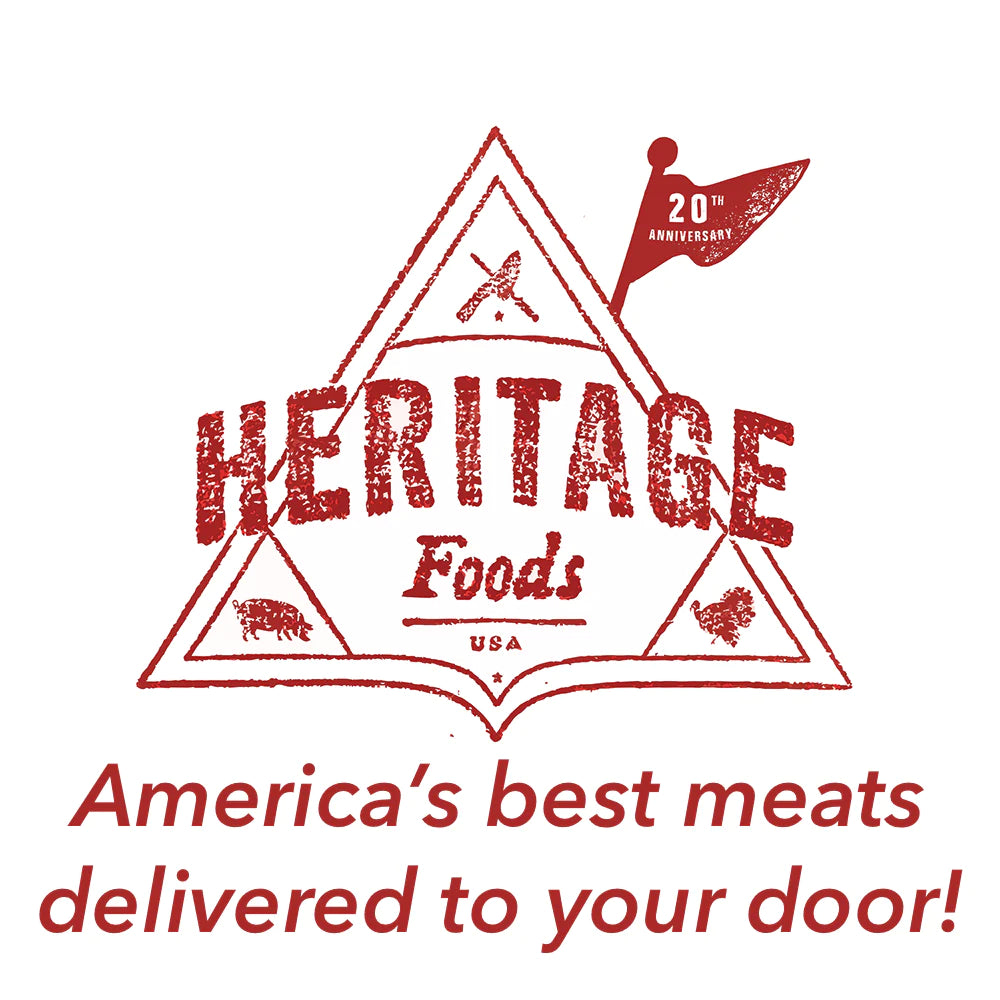
What’s With The Goose? The History Behind Eating Goose At Christmas
Goose, the once-common farm bird, has a rich legacy of multi-purpose value. Geese proudly boast down feathers, dark flavorful meat, and rich high-temperature cooking fat.
As natural foragers, geese are more content grazing than feeding on grain alone and require the freedom to roam in search of tender grasses. Their preference for grazing has made them difficult to adapt into factory farm conditions.
Ducks were more easily adapted to commodity food production. However, the hybridized commercially raised duck is a different bird than it’s predecessors, which were selected over centuries for flavorful dark meat and the perfect amount of fat. Frank Reese, our heritage poultry farmer, can trace his Rowan, Buff, Aylesbury, and Appleyard ducks back over 200 years.
The duck and geese raised by Frank at Good Shepherd Poultry Ranch, spend 6 months sauntering through meadows, foraging, and swimming. Their active lifestyle and diverse diet develop flavor in the birds – something factory farms will never be able to replicate.
Traditionally duck and geese were harvested in Winter, Frank Reese explains –
In the old days you’d never harvest a duck or a goose until after you had freezing weather. The old people really felt that the cold weather allowed the duck to put down or the goose to put down that important layer of fat that was needed to make it taste like it was supposed to.
The longer it takes to grow the better it is.
Goose and duck should have a lot more fat [than other poultry] – that’s how the animal stays warm, but that’s also where all the flavor is. That gives the meat it’s taste. The fat should be kept and used for frying potatoes and all kinds of stuff. It’s very very rich and it doesn’t take much.
Because our birds have lived longer, that means you are going to have to really be careful when you cook them because you can overcook them and dry them out. You can get too much fat out of them. And because these are ducks that have actually been in water and swam and have been active you are going to have to cook them a little longer and slower.
You know, as grandma said, “We ate everything but the ‘honk’ ”.
Frank suggests referring to an older cookbook such as Fanny Farmer for heritage goose and duck recipes and preparation techniques.
Heritage Foods USA Goose & Duck prep tips:
1. Before roasting rest your bird at room temperature for 30 minutes.
2. Generously salt both inside and out of the bird and fill the cavity with
aromatics like garlic, thyme and sage.
3. Prick small holes all over the skin being sure not to pierce the meat. This allows the fat a chance to render out during roasting and ensures crispy
delicious skin!
4. Cook low and slow. We can’t emphasize the importance of this enough. We
suggest cooking at 325 degrees Fahrenheit.
5. Geese and ducks are both red-meat birds, and unlike other poultry their rich breast meat should be served medium-rare. The best way to ensure the dark meat has enough time in the oven to become tender without over cooking the breast is to remove the breast part way through roasting.
6. For extra crispy skin add some of the fat drippings to a sauté pan placed over medium high heat. Remove the leg quarters from the bird and sauté both the legs and the breast skin side down for 3-4 minutes. Do not flip them. Be sure to only sauté the skin side!
